

| COMPAQ DESKPRO 386s/20 With a Evergreen RevTo486 IBM "Blue Lightning" 486 BLX3 Upgrade Chip (20/40/60MHz) |
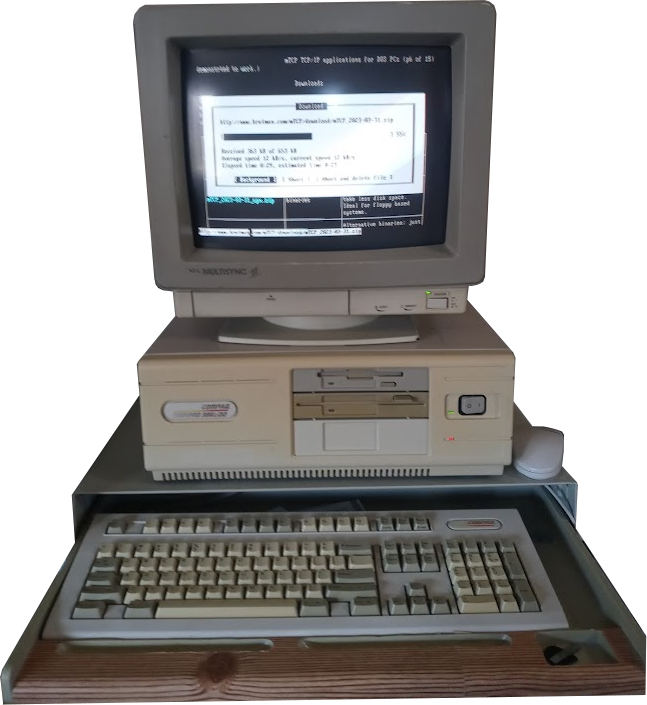 In the spring of 2022, I was helping with setting up the I.T. Infrastructure for a newly constructed local hospital, and one of the contracting companies we worked for had a team leader named Joseph who was moving and had some old PCs to get rid of. I got 3 from him: the ACI Moondog 486, another Minitower Super Socket 7 machine, and then this - a 1991 Compaq Deskpro 386s/20, in a Compaq Deskpro 2000 box, with the original keyboard. In the spring of 2022, I was helping with setting up the I.T. Infrastructure for a newly constructed local hospital, and one of the contracting companies we worked for had a team leader named Joseph who was moving and had some old PCs to get rid of. I got 3 from him: the ACI Moondog 486, another Minitower Super Socket 7 machine, and then this - a 1991 Compaq Deskpro 386s/20, in a Compaq Deskpro 2000 box, with the original keyboard.
The Compaq Deskpro 386s line was a series of 386SX based machines starting in 1990 and ending in about 1992-1993 or so. These machines were based on the newer "Slimline" Compaq Deskpro design which featured "tool-less" upgradability (well...kinda sorta, it has thumbscrews for the top cover like a modern PC), fully integrated video, serial, parallel, and PS/2 mouse/keyboard ports on it. They also featured 72-pin SIMM Memory making them probably one of the first on the market with such. But th real kicker though is the "IBM" blood running in this machine in the form of an Evergreen REVto486 upgrade chip....in the RAREST version no less! 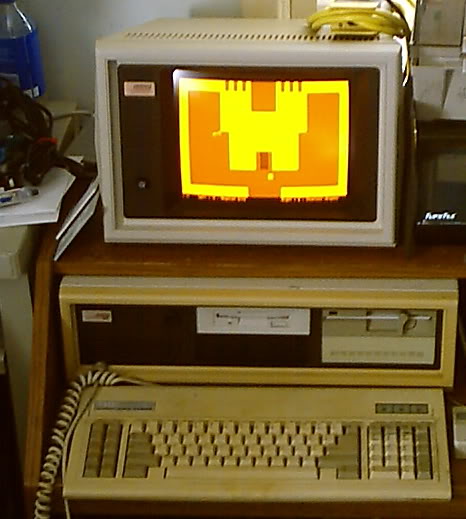

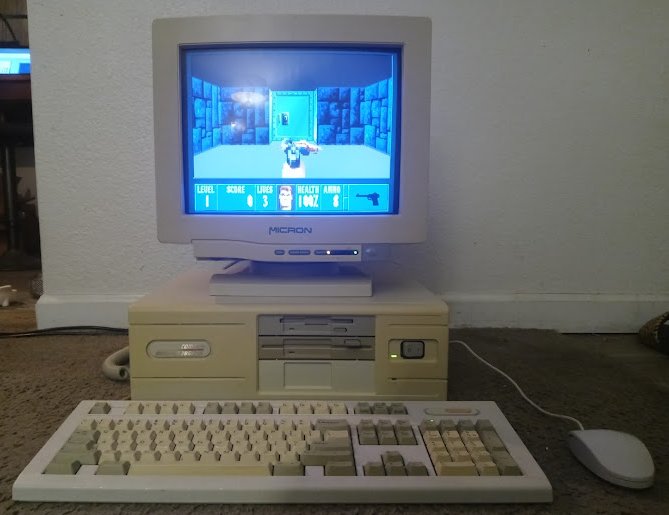
Now, I'm no stranger to the Compaq Deskpro since the 80's models are some of my favorite machines ever created. I have owned TWO of those, a Deskpro 286 model 2551, and a Deskpro 386 (yes the ORIGINAL release from 1986), model 2571. This one is a model 2535 - the SECOND version of the Deskpro 386s (the original was the 2530 Deskpro 386s released in 1989-1990, it was only 16MHz, this is 25MHz, so it's the fastest version). Thing was, Rod Canion era Compaq was a force to be reckoned with. They were the fastest growing company in America at the time, and they were - for a time - the ONLY manufacturer that could really stand up to IBM - the ORIGINATOR of this whole genre. In the 80's, they said "nobody got fired for buying IBM" - well, by the end of the 80's, they probably should have put a /COMPAQ at the end of that. This model came after Rod left in 1988, sort of a short period where Compaq was still great, but cost-reduction became important to widen their marketshare, since in the 80's, they were like the Bugatti or Masarati of computers to IBM's Ferrari or Lamborghini, but in the early 90's, they needed a good Ford or Chevrolet level model for the masses as computers started to move from the office, into people's homes. 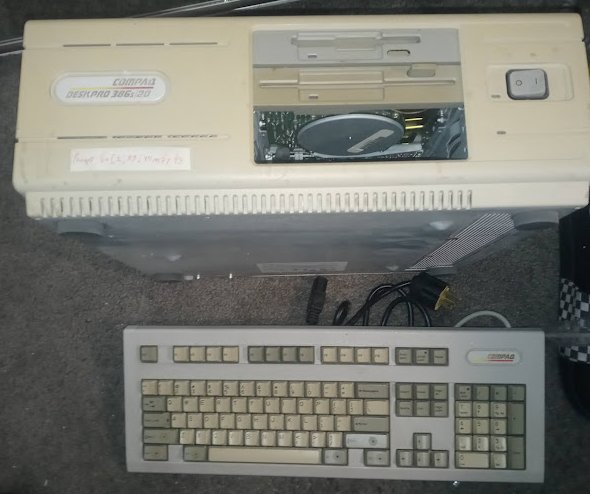
It seems to me, Joseph bought the machine around 1991 or so, and used it both to play XCOM and later as a Linux box. He did not disclose that there were any upgrades. On first examination, it looked like it may have had a tape backup unit or a CD-ROM drive at one point, as I could see a third power cable and an empty drive bay on the bottom. The system as I got it had 10MB of RAM (insanely huge for a 386SX), a 203MB Connor Peripherals hard disk drive featuring some early form of Slackware Linux on it, a few un-covered ISA Slots indicating this thing probably had an SVGA video card at one point as well. It came with it's original Compaq Enhanced II Keyboard (one of the older ones with the Lock LEDs inside the keys - like on a Tandy 1000 series machine). When I brought it home, it powered up and ran as soon as I ran a setup diskette on it and set hte hard disk parameters I found online. 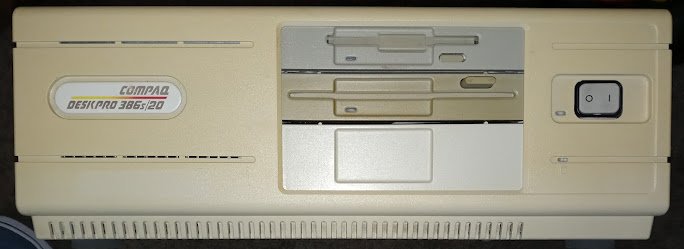 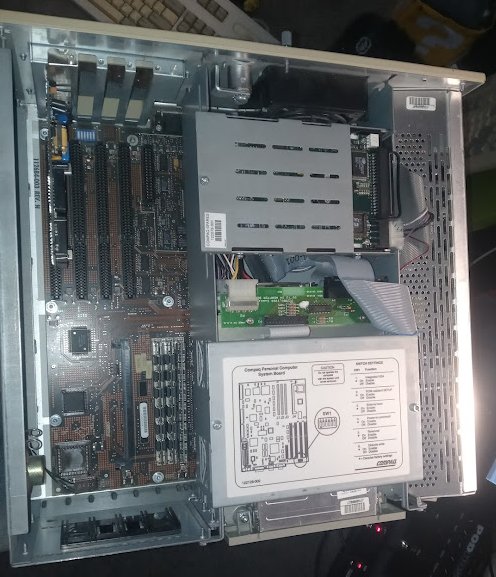
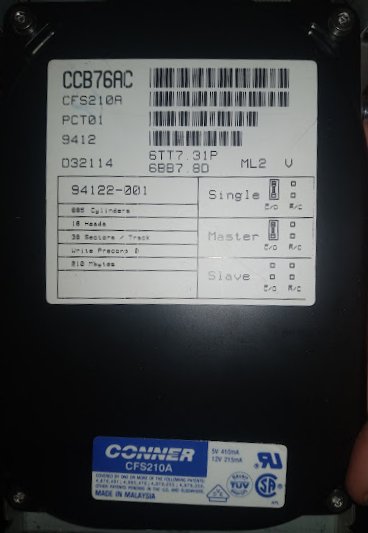
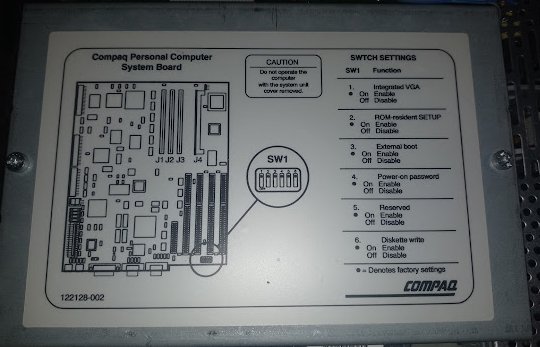 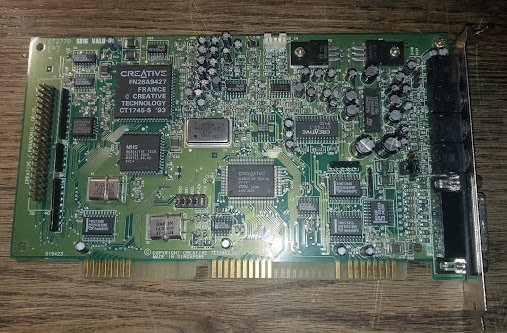

The first things I did was ordered a drive bay cover for it, and repaired the Dallas Clock chip by grinding away the two blank edges (where the + and - terminals for the internal RTC battery on the module are), and soldered on a CR2302 coin cell battery holder, and added an insulator pad above it so the battery would not short out on the drive cage after the fact. A Compaq cover-plate was added to the bottom bay, and a SoundBlaster Vibra 16, and SMC 8416 Ether EZ card were added to the computer to give it network and sound capabilities. 

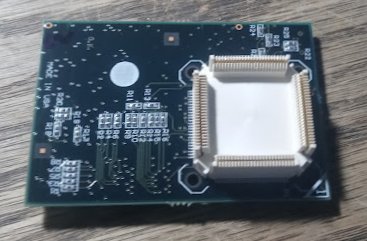
Then came the ardious task of the Evergreen upgrade and figuring out what it was. It just happened, a week before I got this machine, Adrian's Digital Basement did a video on a similiar upgrade chip. So I went on about 2 weeks worth of digging around the internet trying to figure out what was going on. I knew the machine was running really slow, based on the fact I was getting benchmarks comparable to a 286 or slower 386 machine, which seemed inline with the declaration of the i80386 SX-20 under the hood with no co-processor. But what was this upgrade, and how did I get it to work. Well...I discovered this was none-other than the Evergreen RevTo486 upgrade chip, and mine was the rarest of them all - it featured a much revered IBM "Blue Lightning" BLX3 486 clock tripled chip on it. So basically - a 486 SX4 - and those chips had 16K L2 Cache like the DX4 Socket 3 chips do, so that meant this thing was truly capable of some real speed! And it makes sense if he was playing XCOM on this, esp since XCOM2 was found in the CD-ROM of the Moondog PC -and that requires a 486 DX2 and SVGA to work. 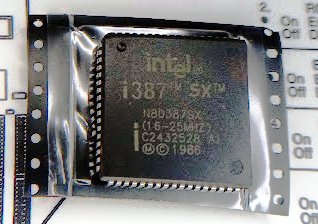


The machine was re-loaded with MS-DOS 6.22, and no Windows. The reasons were a few: first is the tiny 200ish Megabyte hard disk drive, I just did not feel like wasthing 8MB of it to run Windows when I don't even intend to run Windows Games on it. Secondly was that Windows did not provide any real benefits outside of gaming anymore on a machine like this anyway. This was more of a high-speed DOS machine, right in that happy spot between a 286 and a 486 where almost anything from 1985-1995 would run on it in the "golden age of DOS gaming". And lastly, I had MS-DOS 6.22 on hand on 1.44MB 3.5" Floppies, so I could easily install it. Once I had the drivers for the upgrade CPU, the speed differences were night and day. You could run the PC as one of FOUR - the stock i386 SX-20 CPU, a 20MHz 486SX, a 40MHz 486SX2, or a 60MHz 486SX4 - all by either loading, or not loading, the driver at startup, and choosing /1, /2, or /3 for the clock multiplication switch - essentially giving me FOUR computers in one box! 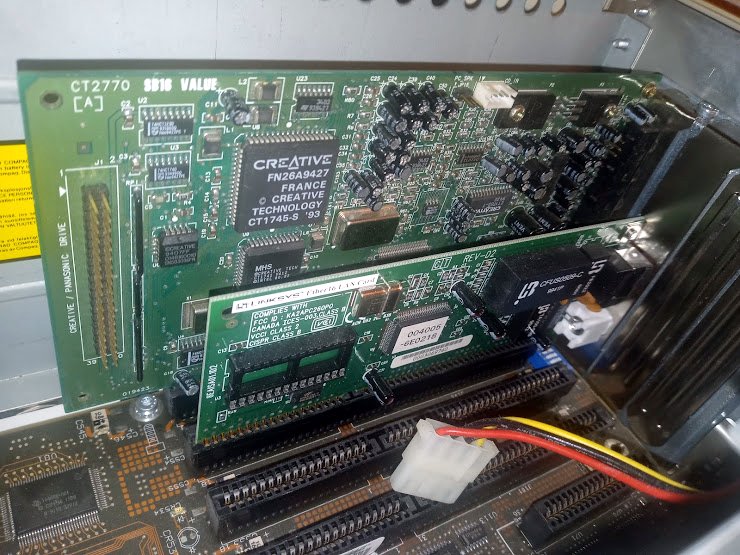

The computer can do the modern internet over Links, BUT, the catch was, the IBM Blue Lightning chip does not contain it's own Math Co-Processor, so I had to install an Intel 80387SX into the computer as well. So that's what happened. I bought a i387SX from across the world, came in in an insanely fast period of time, then I was able to surf the internet in Links on it after that point, which it does fairly well, though you're better off stickign to Text Mode. |